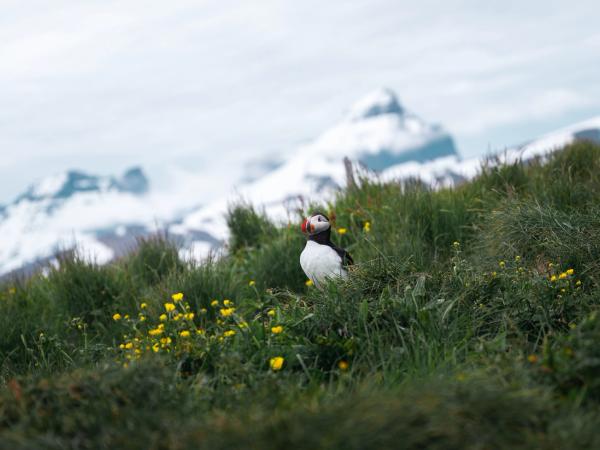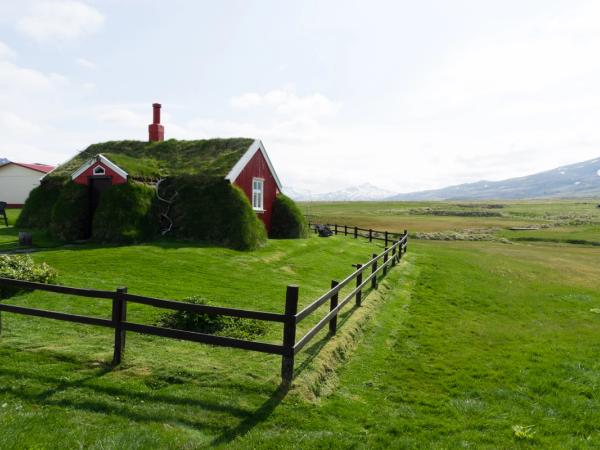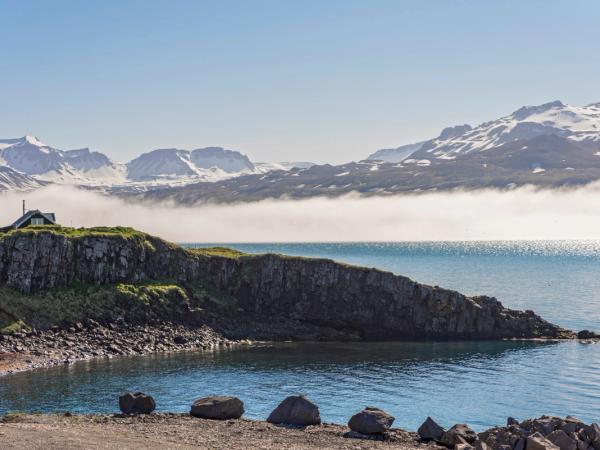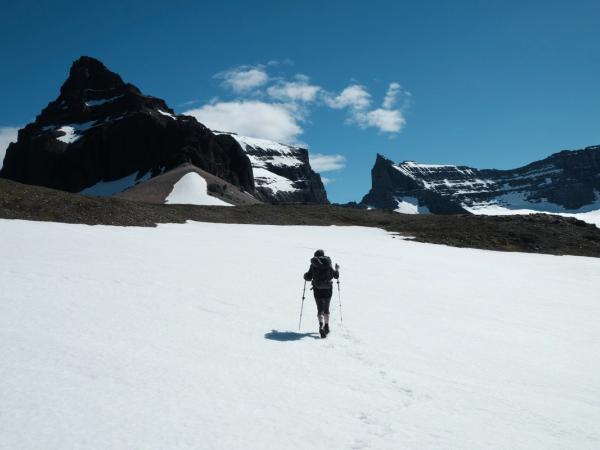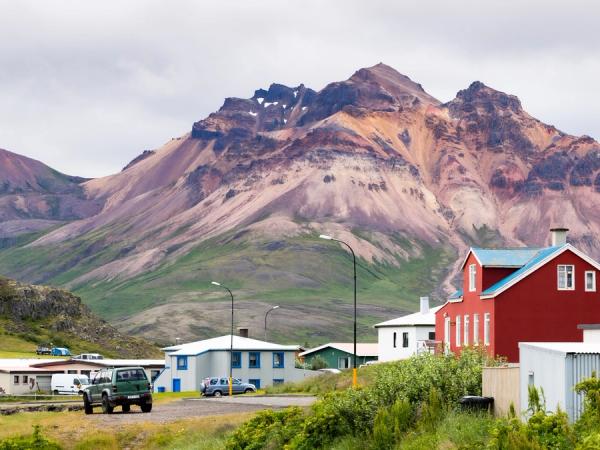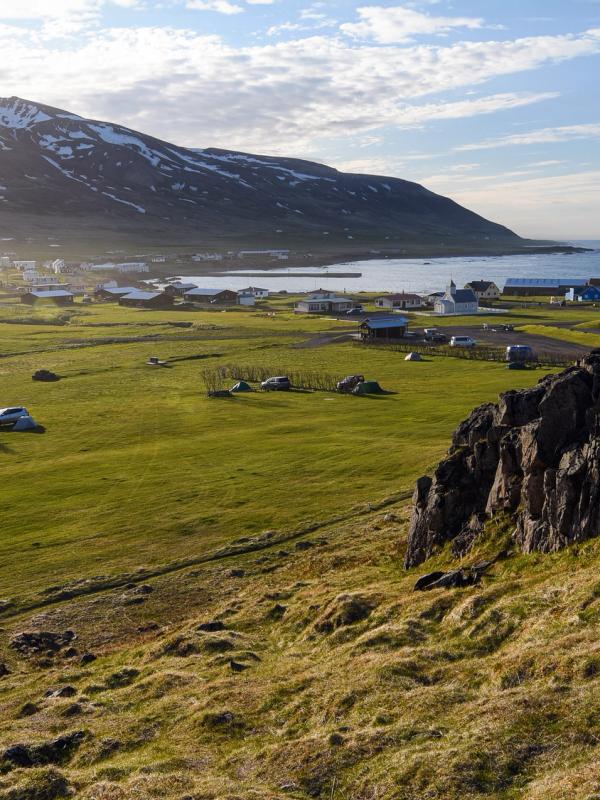
The Ultimate Guide to Borgarfjörður Eystri: A Hidden Gem in East Iceland
Tucked away in East Iceland, Borgarfjörður Eystri is a secret worth finding. This remote fjord has all the things that make Iceland special – big mountains, old stories, and amazing wildlife – without the big crowds you'll see at more famous spots.
The colorful mountains, friendly locals, and cute puffins make the trip worth it. If you want to see the real Iceland away from the Ring Road, this guide will help you plan a trip to what locals call "the capital of elves, puffins, and hiking."
Key Takeaways
- Best time to visit is June-August for puffin watching and hiking
- You need a car to reach this remote area (75 km from Egilsstaðir)
- Home to Iceland's most accessible puffin colony at Hafnarhólmi
- Over 27 marked hiking trails, including the stunning Stórurð
- Rich in Icelandic folklore with Álfaborg (Elf Rock) as a focal point
- Small local population of about 91 people in 2024
What's Borgarfjörður Eystri?
Borgarfjörður Eystri is a remote fjord in East Iceland (Austurland) with a population of just 91 people. The main village, Bakkagerði, sits at the base of tall mountains, with colorful houses scattered across the landscape.
Despite its small size, this area has amazing natural beauty, from high peaks to clear waters, and is known as one of Iceland's best hiking regions. The name "Borgarfjörður" means "Castle Fjord," referring to the castle-like mountains around it.
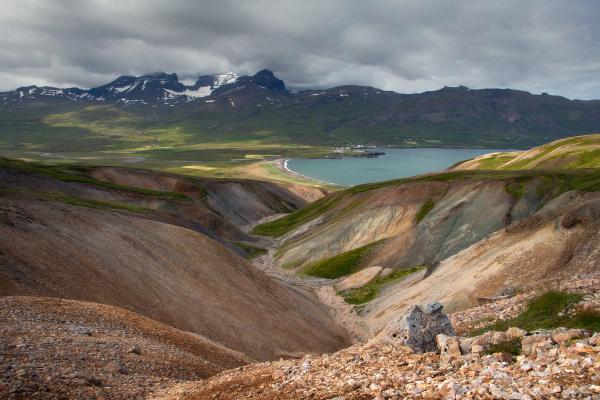
Borgarfjörður Eystri Today
Today, this small community strikes a balance between traditional ways of life, such as sheep farming and fishing, and growing tourism. The locals are welcoming and take pride in sharing their corner of Iceland with visitors.
What makes Borgarfjörður Eystri special is its unique blend of natural beauty and cultural history. The community has strong ties to Icelandic folklore, particularly in its beliefs about elves. Many locals will tell you the area is home to "100 people and 1000 elves," showing how important these traditions still are.
During summer, more people visit, especially during the annual Bræðslan music festival in July, which turns the old herring factory into a concert venue. But even at its busiest, Borgarfjörður Eystri feels real in a way that's getting harder to find in more popular Icelandic spots.
Why is Borgarfjörður Eystri Worth Visiting?
If you're wondering if the trip to this remote corner of Iceland is worth it, the answer is yes. Here's why:
Its Puffins
First, it has one of Iceland's most accessible puffin colonies at Hafnarhólmi. Unlike other puffin-watching spots that need boat trips or hard hikes, here you can walk right up to a viewing platform where thousands of puffins nest from April to August. It's one of the few places where you can get close to these birds while still respecting their home.
Its Hiking
Second, the hiking is excellent. With over 27 marked trails ranging from easy walks to challenging multi-day treks, Borgarfjörður Eystri has some of Iceland's most beautiful hiking terrain. The best is Stórurð (The Giant Boulders), a strange landscape of massive rocks and blue pools under the Dyrfjöll mountains.
Its Folklore
Third, it serves as a center for Icelandic folklore. The distinct Álfaborg (Elf Rock) in the village is said to be the home of the Queen of Elves and has been important to local folklore for centuries. This connection to old beliefs gives the area a magical feeling that adds to its natural beauty.
Its Genuinenes
Finally, Borgarfjörður Eystri offers a chance to experience genuine Icelandic community life. With only 91 residents, this is a place where you can talk with locals at the village store, eat home-cooked meals at small cafés, and see a way of life that hasn't changed much for generations.
Location & How to Get There
Borgarfjörður Eystri is in the northeastern part of East Iceland, about 75 kilometers from Egilsstaðir, the region's main town. Getting there takes some planning, but that's part of what keeps it special.
The most common way is to drive from Egilsstaðir via Road 94. The journey takes approximately 1.5 hours and includes a mountain pass offering stunning views. The road is now paved for most of the way, making it easier to reach than before, but it can still be hard in bad weather.
If you're starting from Reykjavík, you have a few options:
- Fly to Egilsstaðir (1-hour flight) and rent a car
- Drive the full Ring Road (about 8-10 hours to Egilsstaðir)
During the summer months (June to August), the route is usually accessible in any car, although a 4x4 vehicle is considered safer. Outside of summer, a 4x4 vehicle is strongly recommended as snow and ice can make the mountain pass dangerous.
There's no public transportation directly to Borgarfjörður Eystri, so having your own vehicle is essential. Always check road conditions on road.is before heading out, especially if traveling outside summer months.
Things to Do in Borgarfjörður Eystri
Despite its small size, the area offers plenty of exciting things to do.
Meet the Puffins at Hafnarhólmi
The Hafnarhólmi bird colony is the main attraction for wildlife lovers in Borgarfjörður Eystri. This small islet connected to the harbor by a footbridge hosts around 10,000 pairs of Atlantic puffins (lundi) from mid-April to early August.
What makes this colony special is its accessibility. A well-designed series of boardwalks and viewing platforms lets you get close to the puffins without disturbing them. The platforms are built at eye level with the birds' nesting areas, so you can watch their funny waddling, flying attempts, and social interactions from just a few meters away.
Besides puffins, you'll see kittiwakes, fulmars, and common eiders, making it great for birdwatchers and photographers. The best times to visit are early morning or late evening, when the birds are most active and the light is ideal for photography.
The facilities are impressive for such a remote location – wooden walkways protect both visitors and bird burrows, and signs help you identify different species. Best of all, visiting Hafnarhólmi is free, though donations for maintenance are appreciated.
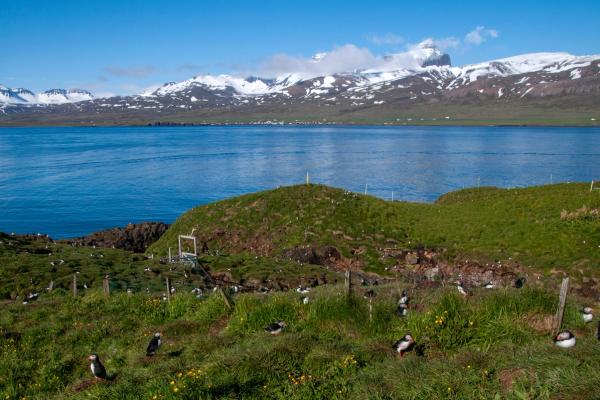
Hike to Stórurð (The Giant Boulders)
Stórurð is the hiking highlight of the region. A magical landscape of enormous boulders scattered among bright blue pools beneath the imposing Dyrfjöll mountains.
The main trail to Stórurð starts from either Vatnsskarð pass or Njarðvík and takes about 2-3 hours each way. The hike is moderately challenging but doable for most people with basic fitness. The trail is well-marked with stakes; however, fog can sometimes reduce visibility, so it's recommended to bring a map or GPS.
When you reach Stórurð, you'll feel like you've entered a fairy tale. Massive rocks, some as big as houses, create a maze-like environment, with clean pools of striking blue water nestled between them. It's a perfect spot for a picnic lunch before heading back.
The best time for this hike is July to early September when the route is snow-free. In early summer, some pools might still be frozen, creating a different but equally beautiful scene.
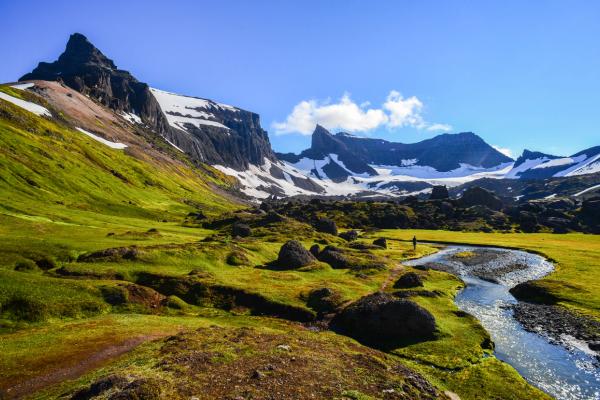
Explore the Víknaslóðir Hiking Trails
If you're up for a bigger hiking adventure, the Víknaslóðir (Trails of the Deserted Inlets) network offers over 150 km of marked paths connecting Borgarfjörður Eystri with deserted fjords to the south.
These trails take you through diverse landscapes – from coastal paths with views of the North Atlantic to high mountain passes and green valleys. The network includes routes to abandoned settlements like Brúnavík, Húsavík (not “whale-watching Húsavík”), and Loðmundarfjörður, each with its own story of former inhabitants who left during the mid-20th century.
For serious hikers, multi-day hut-to-hut treks offer a deep experience of this remote landscape. The Icelandic Hiking Society maintains several mountain huts along the routes where you can stay overnight (booking in advance is essential).
Even if you're not tackling a multi-day hike, the trail to Brúnavík makes a good day trip. This 8 km round-trip hike takes you over a mountain pass to a beautiful black sand beach in a deserted inlet.
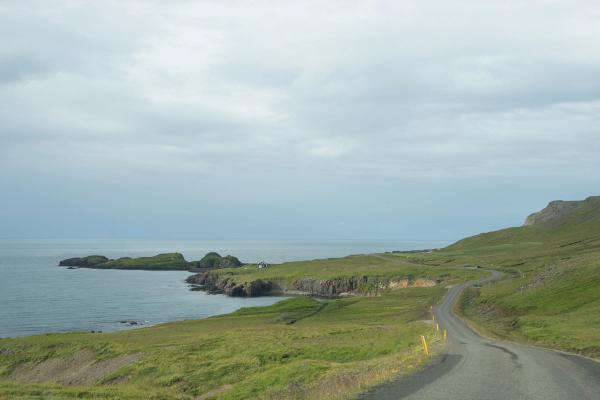
Discover Álfaborg and Icelandic Folklore
Álfaborg (Elf Rock) is a distinctive rocky hill that rises about 30 meters above the fields at the edge of Bakkagerði. According to local folklore, it's the home of the Queen of Elves and her court – a belief so strong that it has shaped the village's development for centuries.
A short, easy trail leads to the top of Álfaborg, offering panoramic views of the surrounding landscape. Information panels share stories about the elves believed to inhabit the rock and their importance in Icelandic culture.
While you might not see any elves yourself (they're said to be visible only to those with the gift), the site offers fascinating insights into Icelandic folklore. Many locals still respect these traditions, and you'll notice how roads and buildings are designed to avoid disturbing potential elf habitats.
The nearby Bakkagerðiskirkja (Borgarfjörður Church) features a unique altarpiece painted by Johannes Sveinsson Kjarval in 1914, depicting Jesus preaching on the Álfaborg – a fascinating blend of Christian and folkloric traditions.
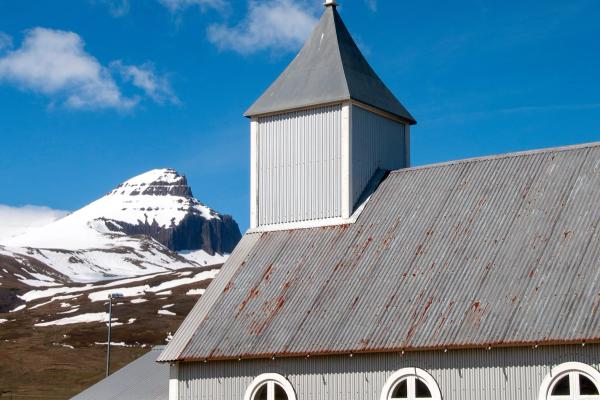
Attend the Bræðslan Music Festival
If you're visiting in late July, try to catch the Bræðslan music festival – one of Iceland's most unique music events. Held in an old herring factory, this intimate festival attracts top Icelandic and international performers despite its remote location.
Past headliners have included Of Monsters and Men, Belle & Sebastian, and Damien Rice, all drawn by the festival's special atmosphere and enthusiastic crowds. With a capacity of just around a thousand people, it offers a rare chance to see major artists in an incredibly intimate setting.
The festival creates a wonderful community atmosphere, with locals and visitors mingling and camping nearby. Tickets tend to sell out quickly, so book well in advance if you're planning your trip around this event. In 2025, it will take place on the 26th.
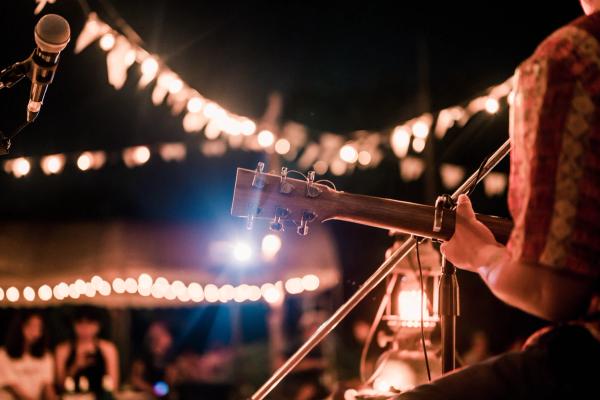
Experience Local Culinary Traditions
Food in Borgarfjörður Eystri reflects the region's connection to both land and sea. While dining options are limited due to the small population, what's available is authentic and locally sourced.
Stop by Álfacafé for homemade cakes and waffles served with fresh whipped cream and berries. The café's charming interior, decorated with elf-themed items and local stones, creates a cozy atmosphere perfect for refueling after a hike. Plus, it has a super cozy terrace where you can eat at massive wooden tables right next to the sea. It’s a personal favorite.
For heartier fare, Já Sæll - Grill & Bar (open summer only) serves dishes made with local ingredients, including freshly caught fish and lamb from nearby farms. The restaurant's simple, homestyle cooking perfectly captures the essence of East Icelandic cuisine.
Try skyr (Icelandic yogurt) with berries – a traditional Icelandic dish that's both healthy and delicious. The local village store (Búðin) stocks basics if you're self-catering, including some local products.
For beer enthusiasts, KHB Craft Brewery & Distillery offers tastings of their small-batch brews, often infused with local herbs and berries. It's a good way to experience Icelandic craft beer culture in an unlikely setting.

Weather at Borgarfjörður Eystri
Weather in Borgarfjörður Eystri can be summed up in one word: unpredictable. The area has a tundra climate characterized by cold temperatures, high humidity, and significant precipitation throughout the year.
Summer (June to Early September)
The summer offers the most favorable conditions, with daytime temperatures between 10-15°C (50-59°F) and nearly 24-hour daylight in June and July thanks to the Midnight Sun. This is ideal for hiking and wildlife watching, with all trails accessible and puffins nesting at Hafnarhólmi. Rain is still common but tends to come in shorter showers rather than all-day downpours. Pack layers and windproof clothing, as conditions can change quickly even on sunny days.
Autumn (Late September to November)
Autumn is marked by shorter days, cooling temperatures ranging from 5-8°C (41-46°F), and increasing winds. The first snow usually arrives on mountain peaks by late September, creating beautiful contrasts of white peaks against colorful autumn landscapes. The weather becomes less predictable, with a potential for storms, so flexibility is key if you plan to visit here. A 4x4 vehicle is recommended as Road 94 can become challenging during bad weather.
Winter (December to March)
Winter transforms the area into a snow-covered landscape with temperatures typically between -2°C and 2°C (28-36°F). Snow is common, making many hiking trails inaccessible and sometimes temporarily isolating the village during storms. For those prepared for the conditions, winter offers opportunities to see the Northern Lights and a profound sense of peace and solitude. Services are limited, and a 4x4 vehicle with winter tires is essential.
Spring (April to May)
Spring sees temperatures gradually climb from winter lows to 2-8°C (36-46°F) as snow retreats up the mountain slopes. The first puffins return to Hafnarhólmi by mid-April, and daylight hours increase significantly. Higher elevation hiking trails remain covered in snow until late May or early June, but coastal paths become accessible earlier. The weather remains variable, so come prepared for both sunny days and potential late-season snowfall.
Places to Visit Nearby
While Borgarfjörður Eystri offers plenty to keep you busy, its remote location means you might want to combine it with visits to other East Iceland highlights. Here are some worthwhile stops, all within a day trip from the fjord.
Seyðisfjörður
Approximately 90 km from Borgarfjörður Eystri (around a 1.5-hour drive by car), Seyðisfjörður is one of East Iceland's most charming towns. Set at the end of a dramatic fjord, it's known for its colorful wooden houses, a vibrant arts scene, and the famous blue church at the end of Rainbow Street.
The drive there takes you through spectacular mountain scenery, and the town itself offers several good restaurants, cafes, and cultural attractions, such as the Skaftfell Center for Visual Art. The unique Tvísöngur Sound Sculpture on the hillside above town – five interconnected concrete domes that create haunting sounds when the wind blows through them – is worth a visit.
Seyðisfjörður makes an excellent contrast to Borgarfjörður Eystri, offering a wider range of services while still maintaining its authentic East Icelandic character.
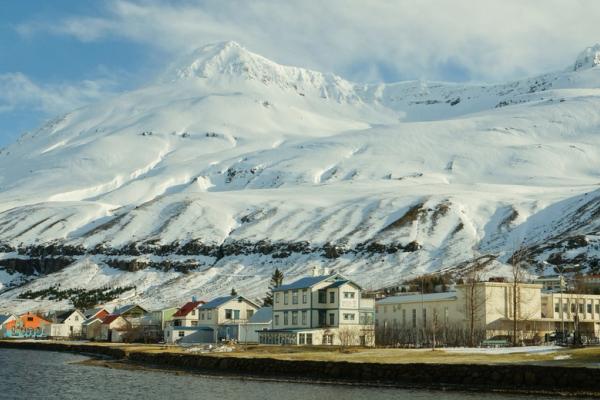
Stuðlagil Canyon
About 110 km from Borgarfjörður Eystri (approximately 1.5 hours by car), Stuðlagil Canyon is one of Iceland's newest attractions. Only recently revealed when a hydroelectric project lowered the river level, this stunning basalt column canyon with turquoise waters has quickly become the target of every photographer that comes to the region.
The canyon offers two viewing options – a relatively easy path to an overlook on the east side, or a more challenging hike to the canyon floor on the west side. Both offer incredible views of the columnar basalt formations lining the river.
While it's a bit of a drive from Borgarfjörður Eystri, the route takes you through diverse landscapes, making the journey part of the experience. Combine it with stops in Egilsstaðir to kill two birds with one stone.
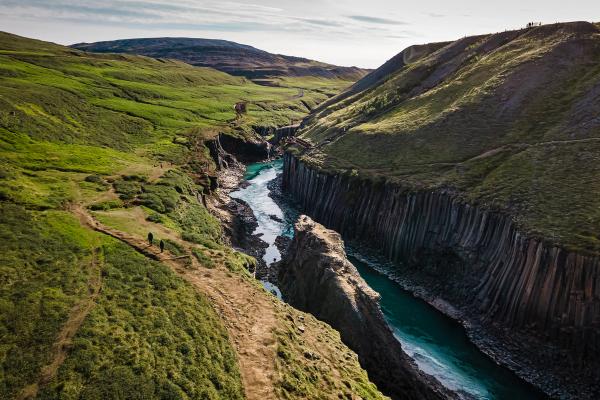
Loðmundarfjörður
For the truly adventurous, Loðmundarfjörður is a deserted fjord accessible via the Víknaslóðir hiking trails or by 4x4 on the challenging F946 mountain road. Once home to a thriving community, it was abandoned in the mid-20th century, leaving behind fascinating ruins and a powerful sense of Iceland's rural past.
The old church (Klyppstaðarkirkja) still stands, along with remnants of farms and houses slowly being reclaimed by nature. The surrounding landscape is pristine, with mountains plunging into the sea and abundant wildlife.
Visiting Loðmundarfjörður requires either a multi-day hike or a serious 4x4 vehicle with an experienced driver. It's not a casual day trip, but for those seeking a deeper connection with East Iceland's history and wilderness, it's an unforgettable experience.
Petra's Stone Collection
About 50 km from Egilsstaðir (on the way to or from Borgarfjörður Eystri), Petra's Stone Collection in Stöðvarfjörður is one of Iceland's most unique attractions. This private collection of minerals and stones, gathered by local woman Petra Sveinsdóttir throughout her lifetime, is now open to the public.
The garden is filled with color, with thousands of stones arranged in creative displays both inside Petra's former home and throughout the surrounding garden. It's a quirky, educational stop that offers insights into both Iceland's geological diversity and one woman's lifelong passion.
The collection is open from May 1st to October 15th, from 9 am to 5 pm, and costs 2000 ISK per adult ($16). Check their website before visiting, just in case.
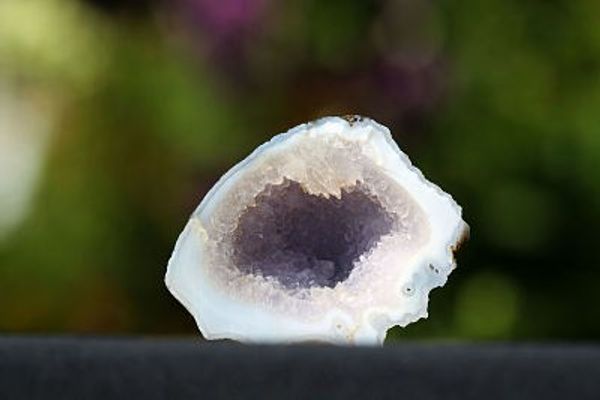
Summary
Borgarfjörður Eystri offers everything that makes Iceland special, concentrated in one remote, beautiful fjord. From the thousands of puffins at Hafnarhólmi to the otherworldly landscape of Stórurð, from rich folklore traditions to stunning hiking routes, it rewards those willing to venture beyond Iceland's more famous attractions.

